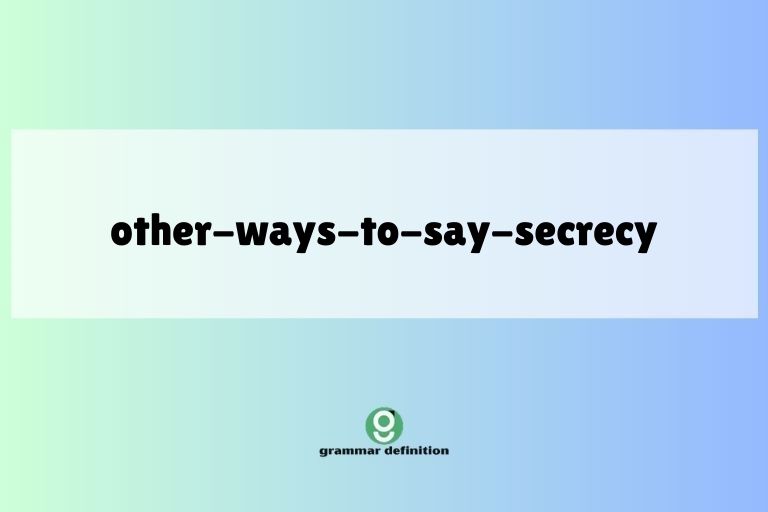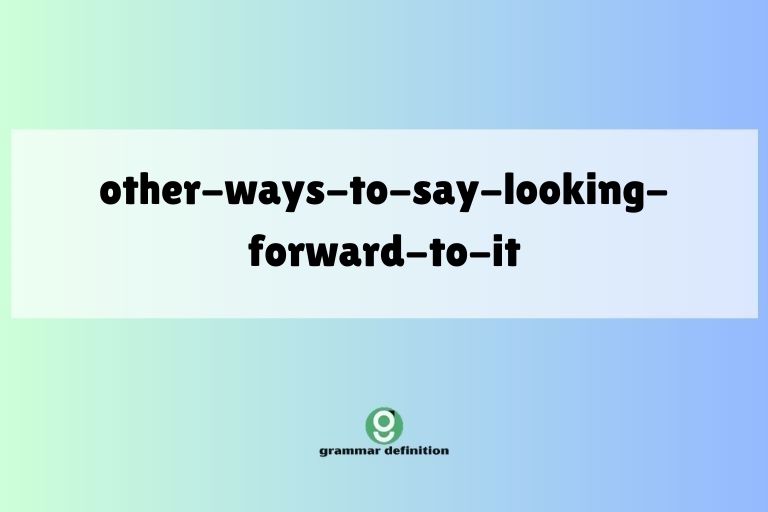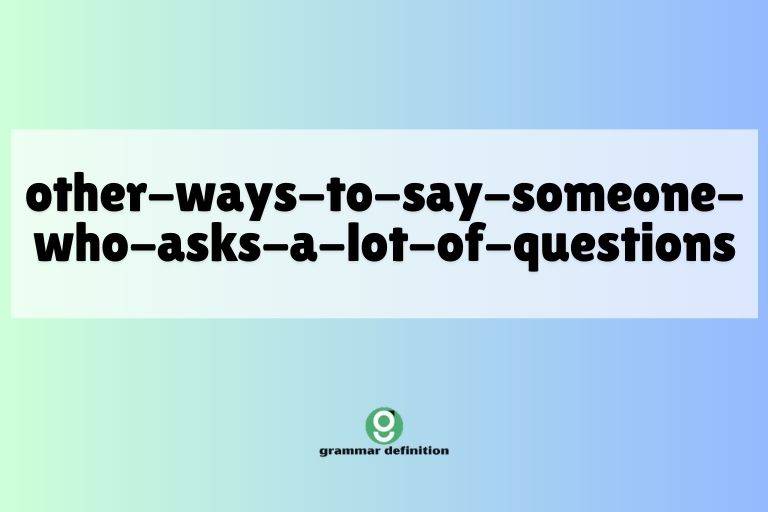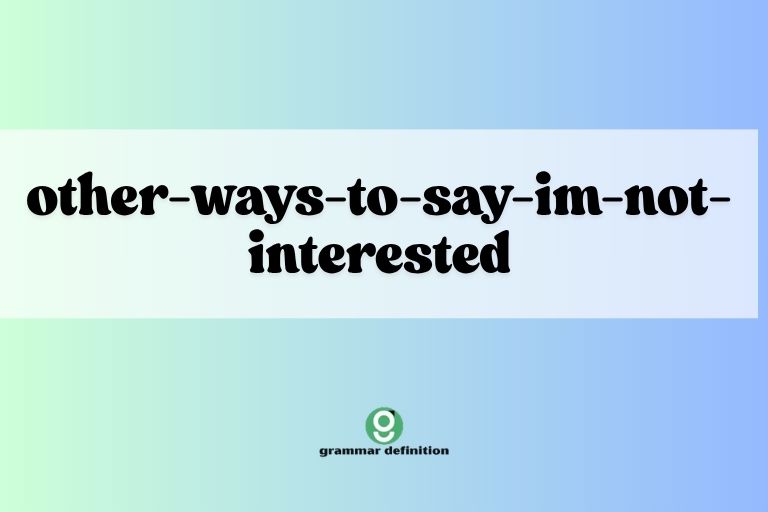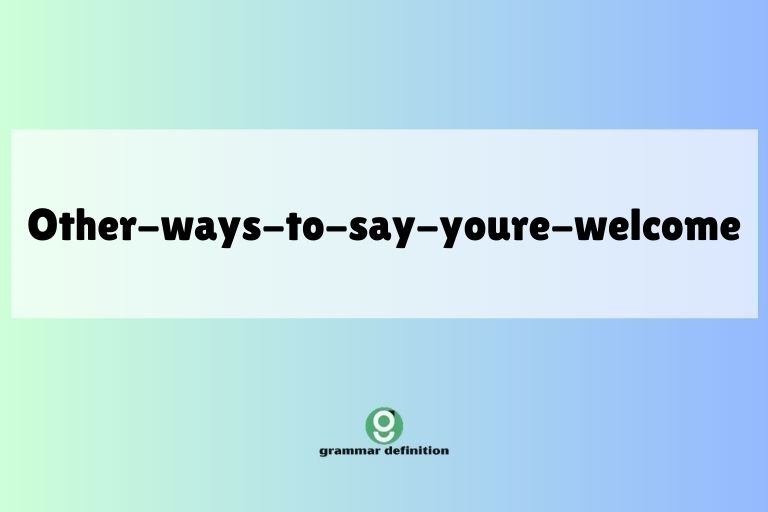Beyond ‘Then Current’: Expanding Your Temporal Vocabulary
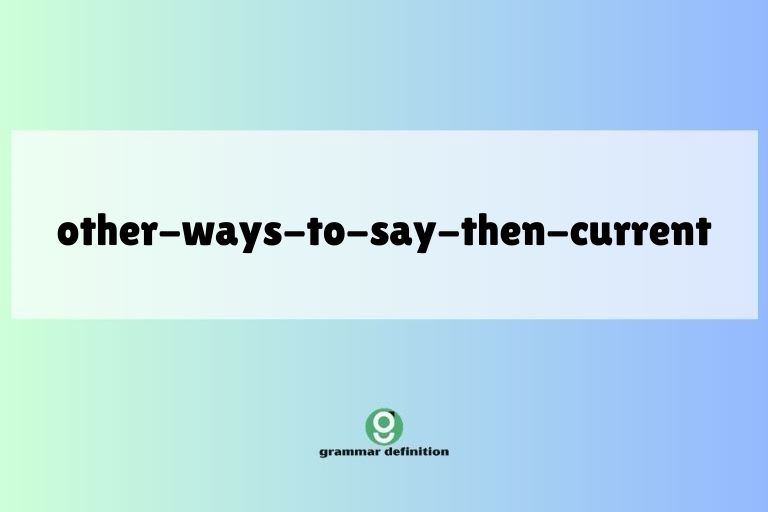
Mastering a variety of ways to express “then current” or “contemporary at that time” significantly enhances your English writing and speaking skills. It allows you to add nuance, precision, and sophistication to your communication.
This article explores various alternatives to the phrase “then current,” providing definitions, examples, and practical exercises to help you broaden your vocabulary and improve your overall language proficiency. Whether you’re an ESL student, a professional writer, or simply someone looking to refine their English, this guide offers valuable insights and tools for expressing temporal relationships more effectively.
Table of Contents
- Introduction
- Definition of “Then Current”
- Structural Breakdown
- Types and Categories of Alternatives
- Examples
- Usage Rules
- Common Mistakes
- Practice Exercises
- Advanced Topics
- FAQ
- Conclusion
Introduction
The phrase “then current” serves as a useful temporal marker, indicating that something was happening or in effect at a specific point in the past. However, relying solely on this phrase can make your writing sound repetitive and lack nuance.
Expanding your vocabulary with alternative expressions allows you to convey the same meaning with greater precision and stylistic flair. This article provides a comprehensive guide to mastering various alternatives to “then current,” equipping you with the tools to enrich your writing and communicate more effectively.
From synonyms like “contemporary” and “present” to more nuanced phrasal alternatives, we’ll explore a wide range of options to suit different contexts and writing styles.
Definition of “Then Current”
“Then current” is an adjective phrase that describes something existing, happening, or being in effect at a particular time in the past. It essentially means “contemporary at that time” or “valid at that point.” The phrase emphasizes the temporal context, highlighting that the described state or condition was specific to a certain period.
It is often used in legal, historical, and business contexts to refer to regulations, practices, or technologies that were in use during a specific time frame. Understanding the precise meaning of “then current” is crucial for accurately interpreting and conveying information about past events and conditions.
Structural Breakdown
The phrase “then current” consists of two parts: the adverb “then” and the adjective “current.”
- Then: This adverb indicates a specific time in the past. It establishes the temporal reference point for the phrase.
- Current: This adjective describes something that is existing, happening, or in use at the specified time (indicated by “then”).
Together, “then current” functions as an adjective phrase modifying a noun. The structure highlights that the noun’s state or characteristic was relevant and applicable during that particular time in the past.
For example, in the phrase “the then current regulations,” “then current” modifies “regulations,” indicating that these were the regulations in effect at that specific point in time.
Types and Categories of Alternatives
There are several ways to replace “then current,” depending on the specific context and the desired nuance. These alternatives can be broadly categorized as:
Contemporary Synonyms
These are single-word adjectives that directly replace “current” while maintaining a similar meaning. Examples include:
- Contemporary: Existing or happening at the same time.
- Present: Existing or occurring now (relative to the past time being discussed).
- Existing: Currently in effect or in existence.
Temporal Adjectives
These adjectives provide a more specific indication of time, offering greater precision than “then current.” Examples include:
- Prevailing: Existing at a particular time; current.
- Reigning: Exercising power or influence at a particular time.
- Applicable: Relevant or appropriate at a particular time.
Phrasal Alternatives
These are phrases that replace “then current” with a more descriptive expression, often adding clarity or emphasis. Examples include:
- In effect at the time: Emphasizes the validity or operational status.
- In place at the time: Similar to “in effect,” but often used for rules or systems.
- As it stood then: Indicates the situation or condition at that specific time.
Contextual Replacements
These alternatives involve rephrasing the sentence to avoid using “then current” altogether, often by incorporating the time frame directly into the sentence. Examples include:
- During that period: Specifies the time frame being discussed.
- At that time: A simple and direct way to indicate the past time.
- Under the [year/era] regime: Provides a specific historical context.
Examples
The following sections provide examples of how to use each type of alternative in different contexts. These examples demonstrate the versatility of these options and how they can enhance your writing.
Examples Using Contemporary Synonyms
This table illustrates the use of contemporary synonyms as replacements for “then current”. Each row provides an original sentence using “then current” and a revised sentence using a synonym.
| Original Sentence | Revised Sentence |
|---|---|
| The then current law prohibited such actions. | The contemporary law prohibited such actions. |
| The then current technology was quite primitive. | The present technology was quite primitive. |
| The then current economic conditions were challenging. | The existing economic conditions were challenging. |
| We operated under the then current guidelines. | We operated under the contemporary guidelines. |
| The then current understanding of the disease was limited. | The present understanding of the disease was limited. |
| The then current regulations were strictly enforced. | The existing regulations were strictly enforced. |
| The then current administration implemented new policies. | The contemporary administration implemented new policies. |
| The then current fashion trends were quite extravagant. | The present fashion trends were quite extravagant. |
| The then current climate of fear gripped the nation. | The existing climate of fear gripped the nation. |
| The then current exchange rate favored imports. | The contemporary exchange rate favored imports. |
| The then current social norms dictated certain behaviors. | The present social norms dictated certain behaviors. |
| The then current standard of living was relatively low. | The existing standard of living was relatively low. |
| The then current political landscape was unstable. | The contemporary political landscape was unstable. |
| The then current scientific knowledge was incomplete. | The present scientific knowledge was incomplete. |
| The then current banking system was vulnerable. | The existing banking system was vulnerable. |
| The then current educational system faced many challenges. | The contemporary educational system faced many challenges. |
| The then current infrastructure was inadequate. | The present infrastructure was inadequate. |
| The then current attitude towards immigrants was hostile. | The existing attitude towards immigrants was hostile. |
| The then current version of the software had bugs. | The contemporary version of the software had bugs. |
| The then current interpretation of the treaty was debated. | The present interpretation of the treaty was debated. |
| The then current level of unemployment was alarming. | The existing level of unemployment was alarming. |
| The then current method of communication was slow. | The contemporary method of communication was slow. |
| The then current state of the economy was precarious. | The present state of the economy was precarious. |
| The then current approach to healthcare was ineffective. | The existing approach to healthcare was ineffective. |
| The then current strategy proved to be unsuccessful. | The contemporary strategy proved to be unsuccessful. |
Examples Using Temporal Adjectives
This table illustrates the use of temporal adjectives as replacements for “then current”. Each row provides an original sentence using “then current” and a revised sentence using a temporal adjective.
| Original Sentence | Revised Sentence |
|---|---|
| The then current regulations did not address the issue. | The prevailing regulations did not address the issue. |
| The then current monarch ruled with an iron fist. | The reigning monarch ruled with an iron fist. |
| The then current laws were applicable in that region. | The applicable laws were in that region. |
| The then current standards were insufficient. | The prevailing standards were insufficient. |
| The then current queen was beloved by her people. | The reigning queen was beloved by her people. |
| The then current rules applied to all participants. | The applicable rules applied to all participants. |
| The then current trend was towards globalization. | The prevailing trend was towards globalization. |
| The then current emperor expanded the empire. | The reigning emperor expanded the empire. |
| The then current policies were implemented quickly. | The applicable policies were implemented quickly. |
| The then current customs were strictly observed. | The prevailing customs were strictly observed. |
| The then current king was known for his wisdom. | The reigning king was known for his wisdom. |
| The then current guidelines were carefully followed. | The applicable guidelines were carefully followed. |
| The then current sentiment was one of optimism. | The prevailing sentiment was one of optimism. |
| The then current leader made significant changes. | The reigning leader made significant changes. |
| The then current requirements were difficult to meet. | The applicable requirements were difficult to meet. |
| The then current attitude was generally positive. | The prevailing attitude was generally positive. |
| The then current president signed the bill into law. | The reigning president signed the bill into law. |
| The then current protocols were adhered to strictly. | The applicable protocols were adhered to strictly. |
| The then current mood was somber and reflective. | The prevailing mood was somber and reflective. |
| The then current authorities issued a warning. | The reigning authorities issued a warning. |
| The then current regulations governed the industry. | The applicable regulations governed the industry. |
| The then current economic climate was uncertain. | The prevailing economic climate was uncertain. |
| The then current monarch abdicated the throne. | The reigning monarch abdicated the throne. |
| The then current standards applied to all projects. | The applicable standards applied to all projects. |
Examples Using Phrasal Alternatives
This table illustrates the use of phrasal alternatives as replacements for “then current”. Each row provides an original sentence using “then current” and a revised sentence using a phrasal alternative.
| Original Sentence | Revised Sentence |
|---|---|
| The then current policy was under review. | The policy in effect at the time was under review. |
| The then current system was inefficient. | The system in place at the time was inefficient. |
| The then current situation was unacceptable. | As it stood then, the situation was unacceptable. |
| The then current rules were strictly enforced. | The rules in effect at the time were strictly enforced. |
| The then current process was time-consuming. | The process in place at the time was time-consuming. |
| The then current agreement was still valid. | The agreement in effect at the time was still valid. |
| The then current conditions were favorable. | As it stood then, the conditions were favorable. |
| The then current legislation was outdated. | The legislation in effect at the time was outdated. |
| The then current procedures were cumbersome. | The procedures in place at the time were cumbersome. |
| The then current state of affairs was chaotic. | As it stood then, the state of affairs was chaotic. |
| The then current regulations were complex. | The regulations in effect at the time were complex. |
| The then current methods were ineffective. | The methods in place at the time were ineffective. |
| The then current climate was tense. | As it stood then, the climate was tense. |
| The then current laws were ambiguous. | The laws in effect at the time were ambiguous. |
| The then current practices were questionable. | The practices in place at the time were questionable. |
| The then current market conditions were volatile. | As it stood then, the market conditions were volatile. |
| The then current standards were rigorous. | The standards in effect at the time were rigorous. |
| The then current technology was cutting-edge. | The technology in place at the time was cutting-edge. |
| The then current atmosphere was celebratory. | As it stood then, the atmosphere was celebratory. |
| The then current guidelines were comprehensive. | The guidelines in effect at the time were comprehensive. |
| The then current requirements were stringent. | The requirements in place at the time were stringent. |
| The then current situation was unsustainable. | As it stood then, the situation was unsustainable. |
| The then current protocols were detailed. | The protocols in effect at the time were detailed. |
| The then current approach was innovative. | The approach in place at the time was innovative. |
Examples Using Contextual Replacements
This table illustrates the use of contextual replacements to avoid using “then current”. Each row provides an original sentence using “then current” and a revised sentence using a contextual replacement.
| Original Sentence | Revised Sentence |
|---|---|
| The then current economic policies led to a recession. | During that period, the economic policies led to a recession. |
| The then current fashion trends were influenced by music. | At that time, fashion trends were influenced by music. |
| The then current government implemented new reforms. | Under the [year] government, new reforms were implemented. |
| The then current social norms were very restrictive. | During that era, social norms were very restrictive. |
| The then current technology was not very advanced. | At that time, the technology was not very advanced. |
| The then current political climate was unstable. | During that period, the political climate was unstable. |
| The then current educational system faced challenges. | At that time, the educational system faced challenges. |
| The then current healthcare system was underfunded. | During that era, the healthcare system was underfunded. |
| The then current environmental regulations were weak. | At that time, the environmental regulations were weak. |
| The then current immigration policies were strict. | Under the [administration]’s leadership, immigration policies were strict. |
| The then current tax laws favored the wealthy. | During that period, tax laws favored the wealthy. |
| The then current trade agreements were controversial. | At that time, trade agreements were controversial. |
| The then current foreign policy was isolationist. | Under the [historical period]’s foreign policy, it was isolationist. |
| The then current military strategy was defensive. | During that time, the military strategy was defensive. |
| The then current energy policy relied on fossil fuels. | At that time, the energy policy relied on fossil fuels. |
| The then current transportation system was inefficient. | During that period, the transportation system was inefficient. |
| The then current communication methods were slow. | At that time, communication methods were slow. |
| The then current agricultural practices were unsustainable. | During that era, agricultural practices were unsustainable. |
| The then current manufacturing processes were polluting. | At that time, manufacturing processes were polluting. |
| The then current labor laws protected workers. | Under the [year]’s labor laws, workers were protected. |
Usage Rules
When choosing an alternative to “then current,” consider the following rules:
- Context is key: Select an alternative that fits the specific context of the sentence and the overall tone of your writing.
- Avoid redundancy: Ensure that the alternative does not repeat information already conveyed in the sentence.
- Maintain clarity: Choose an alternative that is easily understood and does not introduce ambiguity.
- Consider formality: Some alternatives are more formal than others. Choose an alternative that is appropriate for the audience and purpose of your writing.
- Ensure accuracy: Make sure the chosen synonym accurately reflects the intended meaning of “then current.”
Common Mistakes
Here are some common mistakes to avoid when using alternatives to “then current”:
- Using “now current” when referring to the past: “Now current” implies the present time, not a past time.
- Choosing an alternative that is too vague: Select an alternative that provides sufficient detail and avoids ambiguity.
- Using an alternative that is grammatically incorrect: Ensure that the alternative fits grammatically within the sentence.
- Overusing one particular alternative: Vary your language to avoid repetition and maintain reader engagement.
Incorrect: The now current regulations were different then.
Correct: The regulations in effect at the time were different then.
Incorrect: The situation was okay then.
Correct: As it stood then, the situation was acceptable.
Practice Exercises
Test your understanding of the material with these practice exercises.
Exercise 1: Fill in the Blanks
Fill in the blanks with the most appropriate alternative to “then current” from the options provided.
| Question | Options | Answer |
|---|---|---|
| The ___________ economic climate made it difficult for small businesses to thrive. | (a) then current, (b) prevailing, (c) now current | (b) prevailing |
| The company operated under the ___________ guidelines. | (a) then current, (b) applicable, (c) future | (b) applicable |
| The ___________ technology was considered state-of-the-art. | (a) then current, (b) old, (c) new | (a) then current |
| The ___________ laws were strictly enforced. | (a) then current, (b) past, (c) future | (a) then current |
| The ___________ administration implemented several reforms. | (a) then current, (b) next, (c) previous | (a) then current |
| The ___________ social norms dictated certain behaviors. | (a) then current, (b) modern, (c) ancient | (a) then current |
| The ___________ understanding of the disease was limited. | (a) then current, (b) current, (c) future | (a) then current |
| The ___________ regulations did not address the issue. | (a) then current, (b) present, (c) upcoming | (a) then current |
| The ___________ monarch ruled with an iron fist. | (a) then current, (b) reigning, (c) former | (b) reigning |
| The ___________ policy was under review. | (a) then current, (b) in effect at the time, (c) future | (b) in effect at the time |
Exercise 2: Sentence Rewriting
Rewrite the following sentences, replacing “then current” with a suitable alternative.
| Original Sentence | Rewritten Sentence |
|---|---|
| The then current economic conditions were challenging. | The existing economic conditions were challenging. |
| We operated under the then current guidelines. | We operated under the applicable guidelines. |
| The then current understanding of the disease was limited. | The present understanding of the disease was limited. |
| The then current regulations were strictly enforced. | The regulations in effect at the time were strictly enforced. |
| The then current administration implemented new policies. | The contemporary administration implemented new policies. |
| The then current fashion trends were quite extravagant. | At that time, fashion trends were quite extravagant. |
| The then current climate of fear gripped the nation. | The prevailing climate of fear gripped the nation. |
| The then current exchange rate favored imports. | The existing exchange rate favored imports. |
| The then current social norms dictated certain behaviors. | During that era, social norms dictated certain behaviors. |
| The then current standard of living was relatively low. | The existing standard of living was relatively low. |
Exercise 3: Error Correction
Identify and correct the errors in the following sentences.
| Incorrect Sentence | Corrected Sentence |
|---|---|
| The now current regulations were different then. | The regulations in effect at the time were different then. |
| The situation was okay then, as per the then current situation. | As it stood then, the situation was acceptable. |
| The then current technology is old. | The technology at that time was old. |
| The then current rules are applied. | The applicable rules were applied. |
| The then current government will implement new policies. | The contemporary government implemented new policies. |
| The then current trend is popular. | The prevailing trend was popular. |
| The then current method will not work. | The existing method did not work. |
| The then current law is changed now. | The previous law has been changed now. |
| The then current approach is successful. | The approach in place at the time was successful. |
| The then current state is good. | The state of affairs at that time was good. |
Advanced Topics
For advanced learners, consider exploring the nuances of temporal deixis and how different cultures express time references. Research the historical evolution of specific phrases and their connotations.
Examine how legal and technical writing utilizes precise temporal language to avoid ambiguity and ensure accuracy. Furthermore, delve into the philosophical implications of time and how language shapes our perception of past, present, and future.
FAQ
- What is the best alternative to “then current” in legal writing?
In legal writing, precision is paramount. Alternatives like “in effect at the time” or “applicable at that time” are generally preferred as they clearly indicate the legal validity of a rule or regulation during a specific period. - How can I avoid repetition when using alternatives to “then current”?
Vary your language by using a mix of synonyms, phrasal alternatives, and contextual replacements. Also, consider rephrasing sentences to eliminate the need for the phrase altogether. - Is “present” always a suitable alternative to “then current”?
While “present” can be a suitable alternative, it is important to ensure that the context clearly indicates that you are referring to a past time. Otherwise, “present” might be misinterpreted as referring to the current moment. - What is the difference between “prevailing” and “reigning” as alternatives to “then current”?
“Prevailing” generally refers to a widespread condition or trend, while “reigning” specifically refers to someone or something that holds power or authority. Choose the alternative that best reflects the specific context. - Can I use “former” as an alternative to “then current”?
“Former” can be used if you’re contrasting a past state with the present, but it emphasizes the past nature more strongly than “then current.” It’s suitable when highlighting a change or transition. - How do I choose the most appropriate alternative for my audience?
Consider the level of formality and the expected vocabulary of your audience. For a general audience, simpler alternatives like “at that time” might be best. For a more specialized audience, you can use more technical or nuanced alternatives. - Are there any alternatives to “then current” that are particularly useful in historical writing?
In historical writing, contextual replacements like “during that period” or “under the [historical period] regime” can provide valuable context and avoid the need for “then current” altogether. - How can I improve my ability to use alternatives to “then current” effectively?
Practice using different alternatives in your writing and speaking. Pay attention to how other writers and speakers use temporal language. Seek feedback from others on your word choices and clarity.
Conclusion
Mastering alternatives to “then current” is a valuable step towards enhancing your English language skills. By expanding your vocabulary and understanding the nuances of temporal expressions, you can communicate more effectively and add greater precision and sophistication to your writing and speaking.
Remember to consider the context, avoid redundancy, and maintain clarity when choosing an alternative. With practice and attention to detail, you can confidently navigate the complexities of temporal language and express yourself with greater fluency and accuracy.
Keep experimenting with different options and seek feedback to refine your skills and achieve your language goals.

